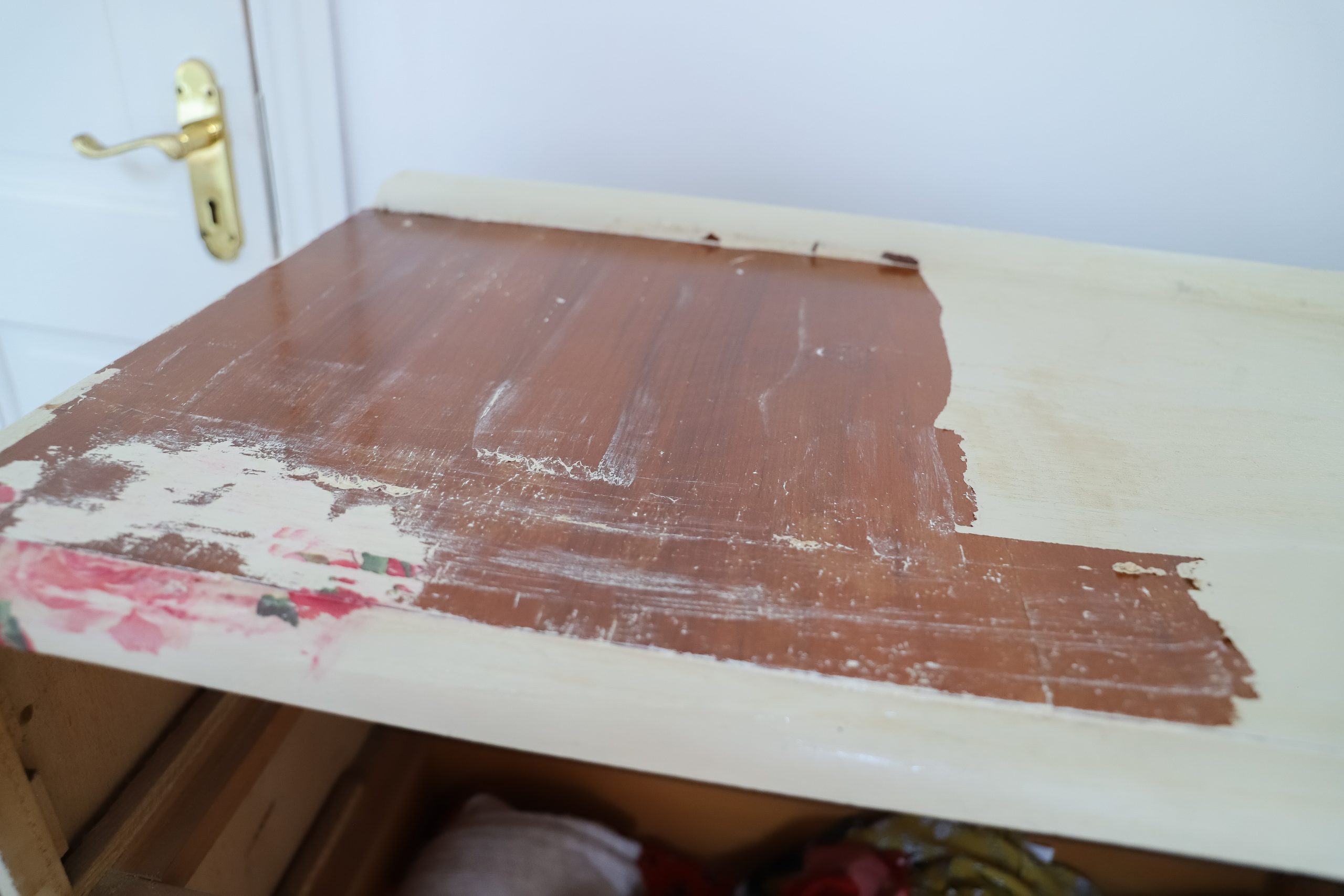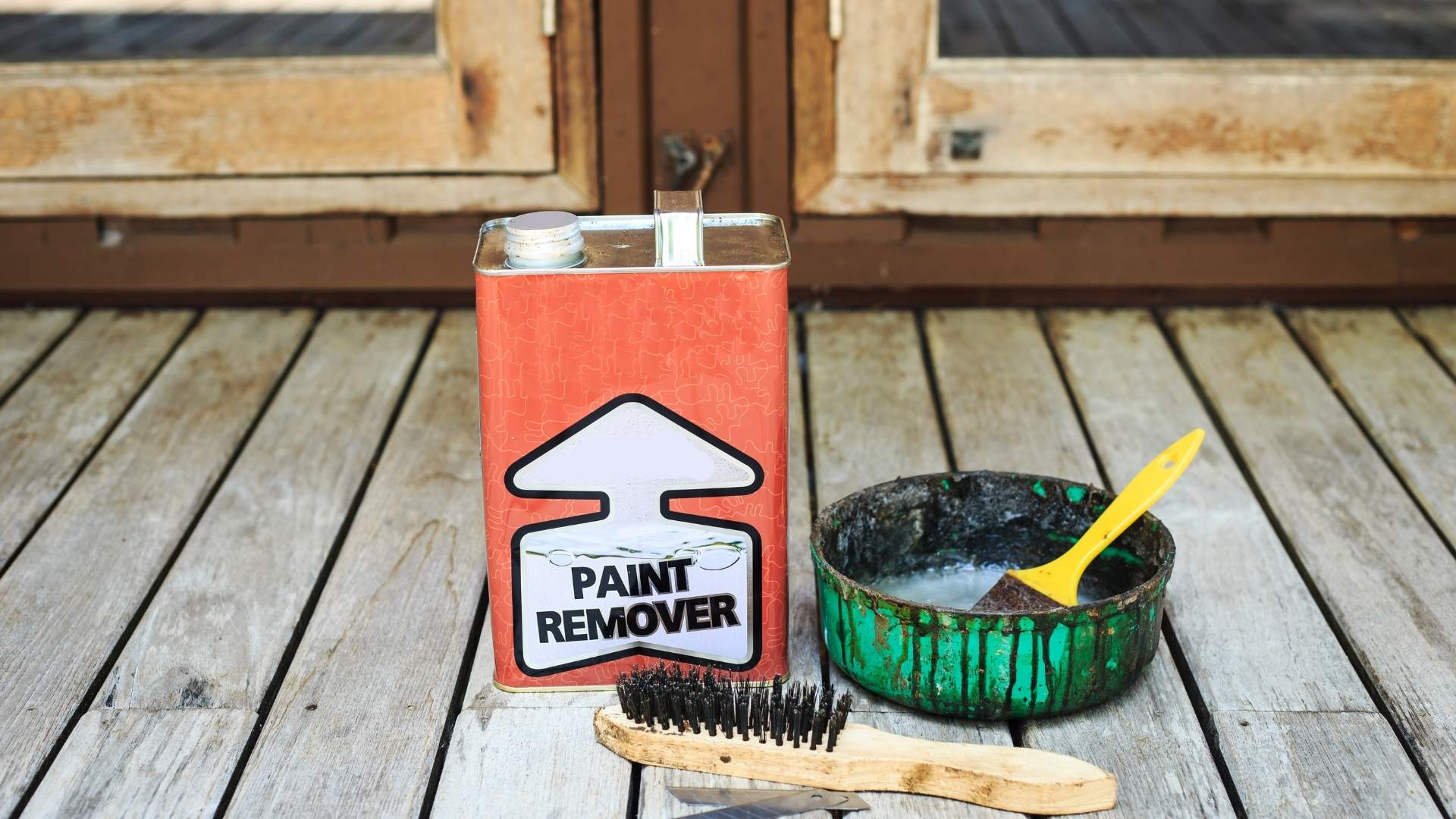To remove chalk paint, start by dampening the surface with water. Use a scrub brush or sponge to gently scrub away the paint.
Chalk paint is popular for its matte finish and ease of use. However, there may come a time when you want to remove it. Whether you made a mistake or want a different color, knowing how to effectively remove chalk paint is essential.
This guide will provide you with simple, effective methods to restore your surface. Removing chalk paint doesn’t require harsh chemicals or professional help. With the right tools and techniques, you can achieve a clean finish in no time. Dive into this article to explore various methods for removing chalk paint from different surfaces.

Credit: www.daintydressdiaries.com
Contents
- Introduction To Chalk Paint Removal
- Preparation Steps Before Removing Chalk Paint
- Identifying The Type Of Surface
- Chemical Strippers For Chalk Paint Removal
- Sanding: A Manual Removal Method
- Heat Guns And Their Role In Paint Removal
- Natural And Eco-friendly Solutions
- Cleaning And Caring For The Surface Post-removal
- Common Challenges And Solutions
- Conclusion: Ensuring A Successful Chalk Paint Removal
- Frequently Asked Questions
- Conclusion
Introduction To Chalk Paint Removal
Chalk paint has become very popular for its easy application and beautiful finish. Many people love it for upcycling furniture and home decor. Its matte look gives a vintage feel that many admire.
Sometimes, removal of chalk paint is necessary. Over time, it may chip or fade. Changing the color or style can also drive the need for removal. Preparation is key before starting the removal process. Ensure to gather all the necessary tools and materials for the job.
Taking the right steps can make removal easier. Use sanding or a chemical stripper for best results. Always remember to wear proper safety gear while working. Enjoy the transformation of your furniture!
Preparation Steps Before Removing Chalk Paint
Start by gathering all the necessary tools. You will need a scraper, sandpaper, and a clean cloth. A paint stripper can also help. Make sure to wear gloves and a mask for safety.
Next, protect your work area. Use a drop cloth to cover floors and furniture. Tape off any areas that you want to keep safe. Ensure there is good ventilation in the room.
Check the surface for any damage before starting. This helps you plan the best way to remove the paint. Always follow the instructions on any products you use.
Identifying The Type Of Surface
Identifying the type of surface is important for removing chalk paint. Different surfaces require different methods. Here are some common surfaces and their approaches:
| Surface Type | Removal Method |
|---|---|
| Wood | Use a sanding block or stripper. |
| Metal | Apply paint remover or solvent. |
| Plaster | Use a scraper and water. |
| Plastic | Try a soft cloth and soapy water. |
Assessing the paint condition is crucial for effective removal. Look for peeling or chipping paint. Test a small area first. This helps understand how the paint reacts. Always wear protective gear for safety. Use ventilation to avoid inhaling fumes.
Chemical Strippers For Chalk Paint Removal
Choosing the right chemical stripper is vital for effective chalk paint removal. Look for biodegradable options to protect the environment. Ensure the product is safe for your surface type. Always read the label for instructions and precautions.
For effective removal, follow these application tips. Wear protective gear like gloves and goggles. Apply the stripper evenly on the paint surface. Let it sit for the recommended time. Use a scraper to remove the softened paint. Clean the area with water and soap afterward.
Sanding: A Manual Removal Method
Choosing the right sandpaper grit is crucial for removing chalk paint effectively. Start with a coarse grit like 80 for initial sanding. This grit helps remove the bulk of the paint quickly.
Next, switch to a medium grit of 120 to smooth the surface. This step prepares the area for finer sanding. Finally, use a fine grit of 220 for a polished finish. This ensures a smooth surface ready for repainting or refinishing.
For the best results, always sand in the same direction as the wood grain. This technique prevents scratches and damage. Keep the sandpaper clean by replacing it often. A clean surface ensures efficient sanding and better results.

Credit: www.daintydressdiaries.com
Heat Guns And Their Role In Paint Removal
Using a heat gun can help remove chalk paint effectively. Always keep the heat gun moving. This prevents the wood from burning. Start at a low temperature to avoid damage. Increase the heat slowly if needed.
Wear safety goggles and gloves for protection. Make sure to work in a well-ventilated area. Keep flammable materials away from the heat source. Use a scraper to gently lift the paint as it softens.
Test a small area first to check for damage. Always follow the manufacturer’s instructions for the heat gun. Patience is key when using this tool. Take breaks to avoid overheating surfaces.
Natural And Eco-friendly Solutions
Mix equal parts of vinegar and water in a spray bottle. Spray the mixture on the chalk paint. Let it sit for a few minutes. This helps to loosen the paint. Wipe it off with a soft cloth or sponge. Repeat if needed for stubborn areas.
For a baking soda paste, mix three parts baking soda with one part water. Apply the paste to the painted surface. Use a scrubbing brush to gently scrub the area. Rinse with warm water. This method works well on tough spots.
Cleaning And Caring For The Surface Post-removal
After removing chalk paint, cleaning is essential. Use a mild soap solution to wash the surface. Rinse thoroughly to remove any soap residue. This will ensure a clean finish.
Neutralizing chemicals is crucial after stripping. Mix equal parts of water and vinegar. Apply this solution to the area. It helps to balance the surface pH.
For finishing touches, dry the surface completely. Use a soft cloth to buff it. This adds a nice shine and prevents dirt buildup.
Regular maintenance keeps surfaces looking fresh. Wipe with a damp cloth often. Avoid harsh cleaners that may damage the finish.
Common Challenges And Solutions
Removing stubborn chalk paint can be tricky. Water and soap are often not enough. Use a paint stripper for tough spots. Apply it carefully and follow the instructions. Always test on a small area first.
Wearing gloves and a mask is important for safety. Keep the area well-ventilated to avoid fumes.
To avoid common mistakes, don’t rush the process. Allow the remover to sit for the recommended time. Rinse thoroughly after use to prevent residue.
Using the right tools can also help. A scraper works well for larger areas. For fine details, a brush is better. Take your time to ensure the best results.
Conclusion: Ensuring A Successful Chalk Paint Removal
Removing chalk paint can be easy with the right methods. Here’s a quick recap of effective techniques:
- Use warm water and soap for light stains.
- Try vinegar for tougher spots. It works wonders!
- For stubborn areas, consider using a sanding block.
- Chemical removers are strong but follow safety guidelines.
Restoring surfaces after paint removal is important. Start with a clean cloth to wipe away debris. Then, apply a primer for better adhesion. Finally, repaint or finish with a suitable product.

Credit: a1paintremovalinc.com
Frequently Asked Questions
What Is The Best Remover For Chalk Paint?
The best remover for chalk paint is a mix of warm water and soap. For tougher areas, use a specialized paint stripper. Always test in a small area first. Ensure proper ventilation and wear protective gear for safety.
Is Chalk Paint Easy To Remove?
Chalk paint is relatively easy to remove. Use soap and water for light clean-up. For stubborn areas, try sanding or using a paint stripper. Always test in a small area first to avoid damaging the surface. Removing chalk paint can be straightforward with the right approach.
How Do You Remove Chalk Paint Without Damaging Wood?
To remove chalk paint from wood, use a damp cloth to soften the paint. Gently scrape with a plastic scraper. For stubborn areas, apply a mixture of vinegar and water. Rinse and dry the surface thoroughly. Always test a small area first to avoid damage.
What Is The Best Way To Remove Chalk From Chalk Paint?
To remove chalk from chalk paint, gently wipe the surface with a damp cloth. For stubborn stains, use a mild soap solution. Avoid harsh chemicals that can damage the paint. Always test on a small area first to ensure compatibility.
Regular cleaning prevents chalk buildup.
Conclusion
Removing chalk paint can be a straightforward process with the right techniques. Whether you’re refreshing old furniture or starting a new project, understanding the best methods is key. Always test in small areas first. With patience and care, you can restore surfaces to their original beauty.
Embrace the transformation!
